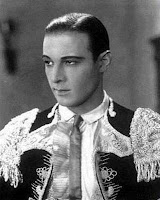Despite initial commercial
failure, True Romance’s strong
performances and savvy script have made it a cult classic. Written by Quentin
Tarantino and Roger Avery before the release of Reservoir Dogs, Tarantino once intended to direct the film too but
eventually sold the script after losing interest. Tony Scott took over in the
director’s chair and threw out Tarantino’s non-linear storyline in favour of a
more traditional linear approach but the bulk of Tarantino’s story remained.
The film features a central love story which gets tangled up in the worlds of
drugs, organised crime and Hollywood
before untangling itself in a hail of bullets following a very Tarantino-esque
Mexican Standoff.
The movie is famous for its cast
which rivals any in cinema history. Christian Slater and Patricia Arquette star
as the young couple who find love at a triple bill Kung Fu movie night but are
joined on screen by a vast array of the great and good of their profession.
Names and faces recognisable to all include Michael Rapaport, Dennis Hopper,
Brad Pitt, Samuel L. Jackson, James Gandolfini, Gary Oldman, Val Kilmer, Chris
Penn, Tom Sizemore, Victor Argo and Christopher Walken. I’m struggling to think
of any cast which matches the one assembled here and if you have a suggestion,
I’d love to hear it.


















.jpg)













